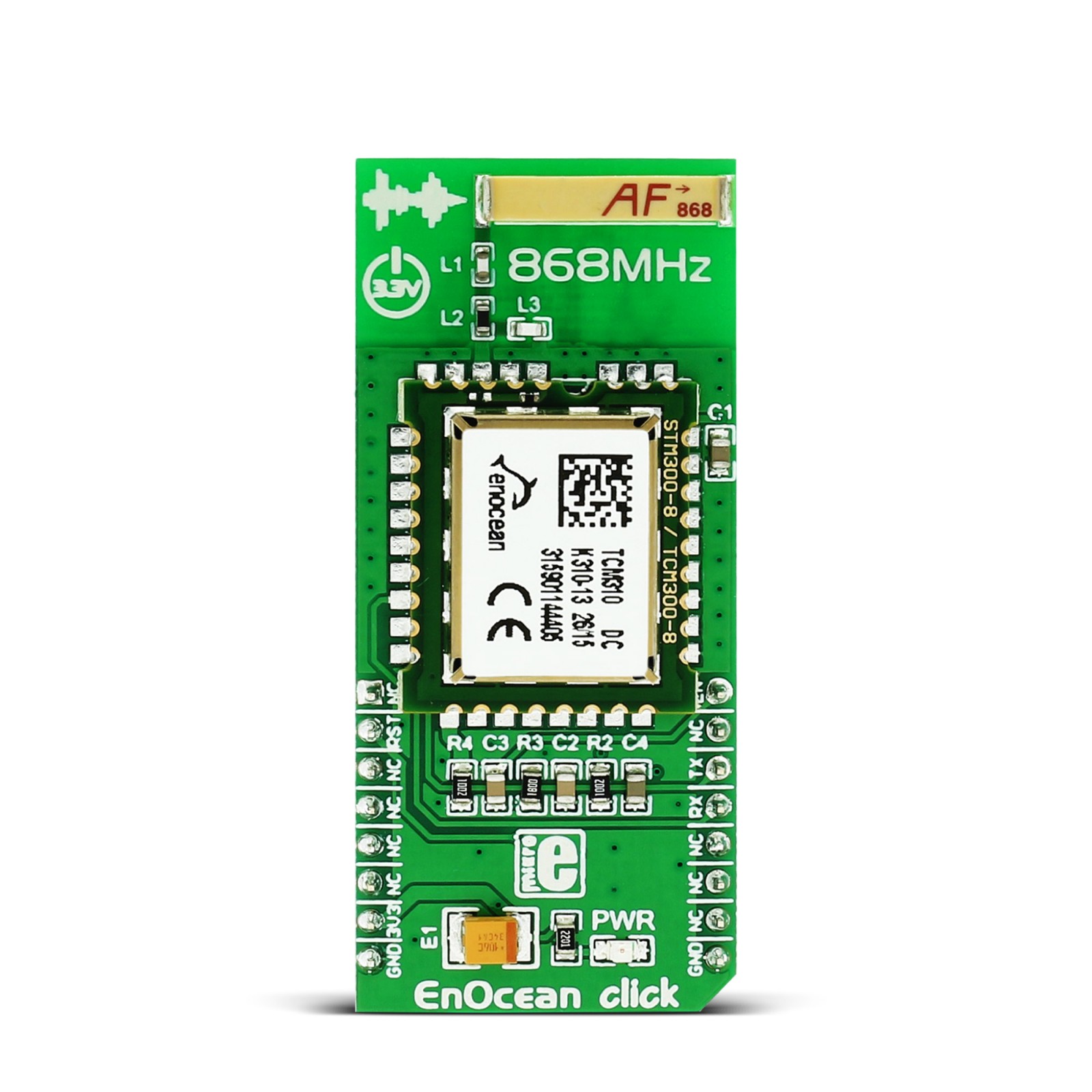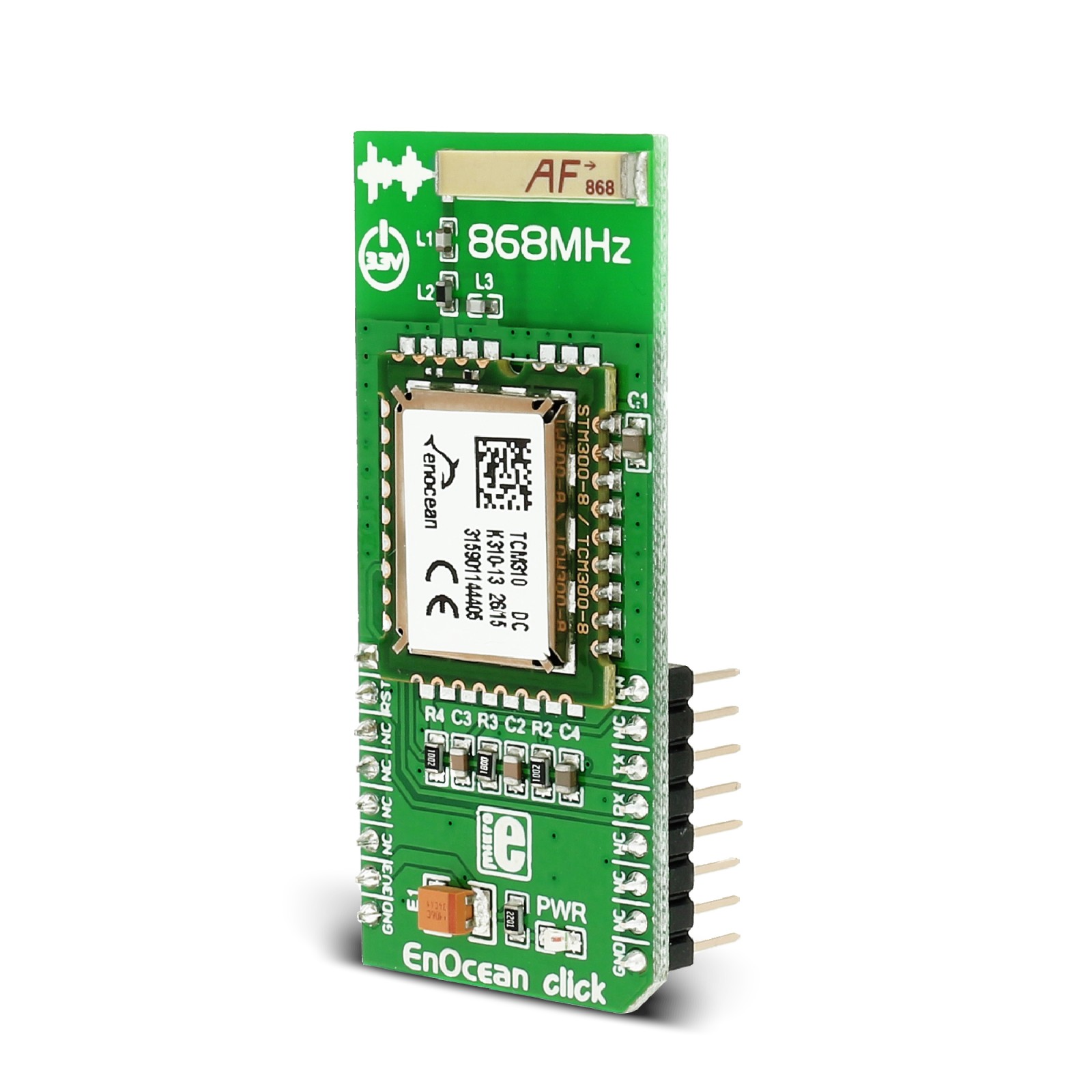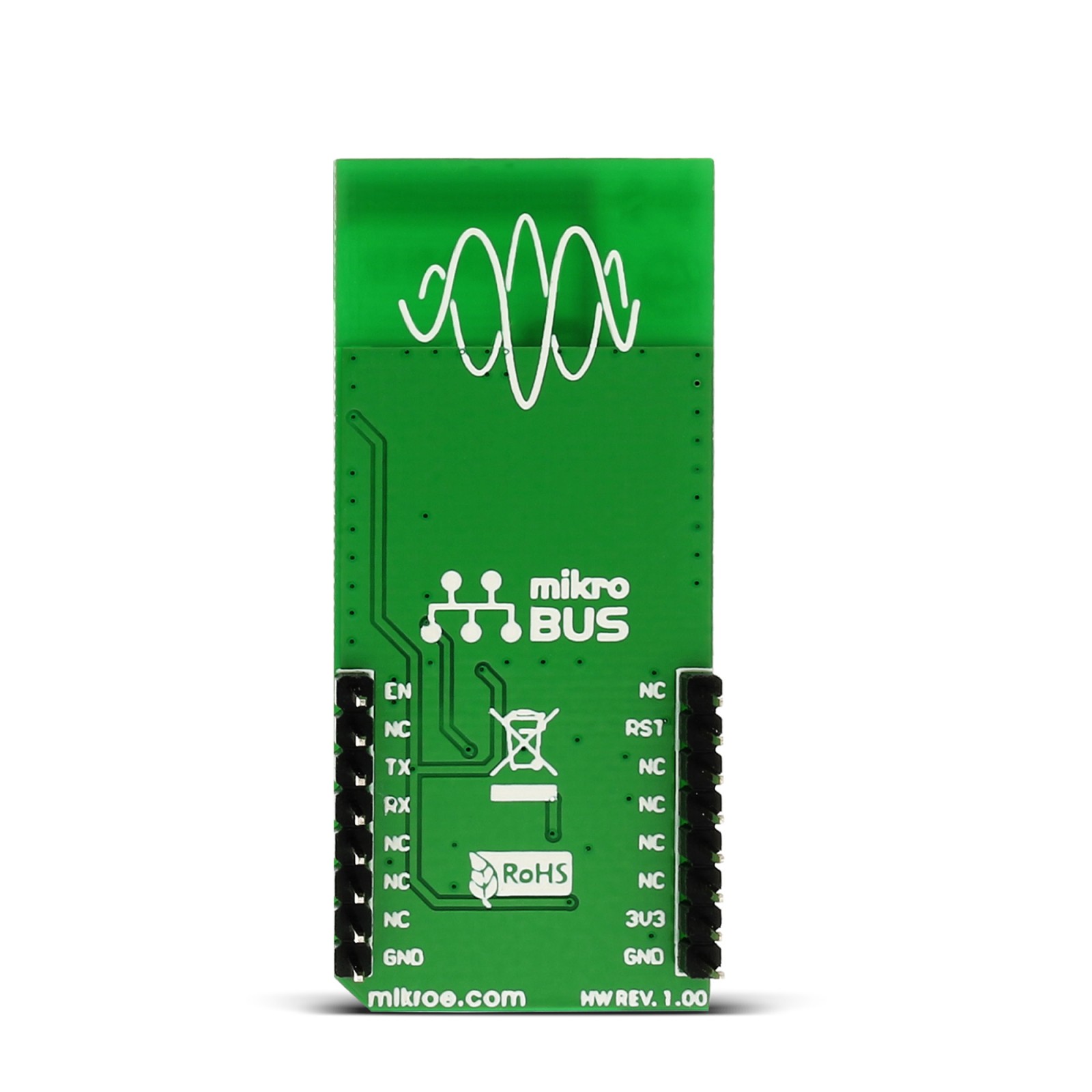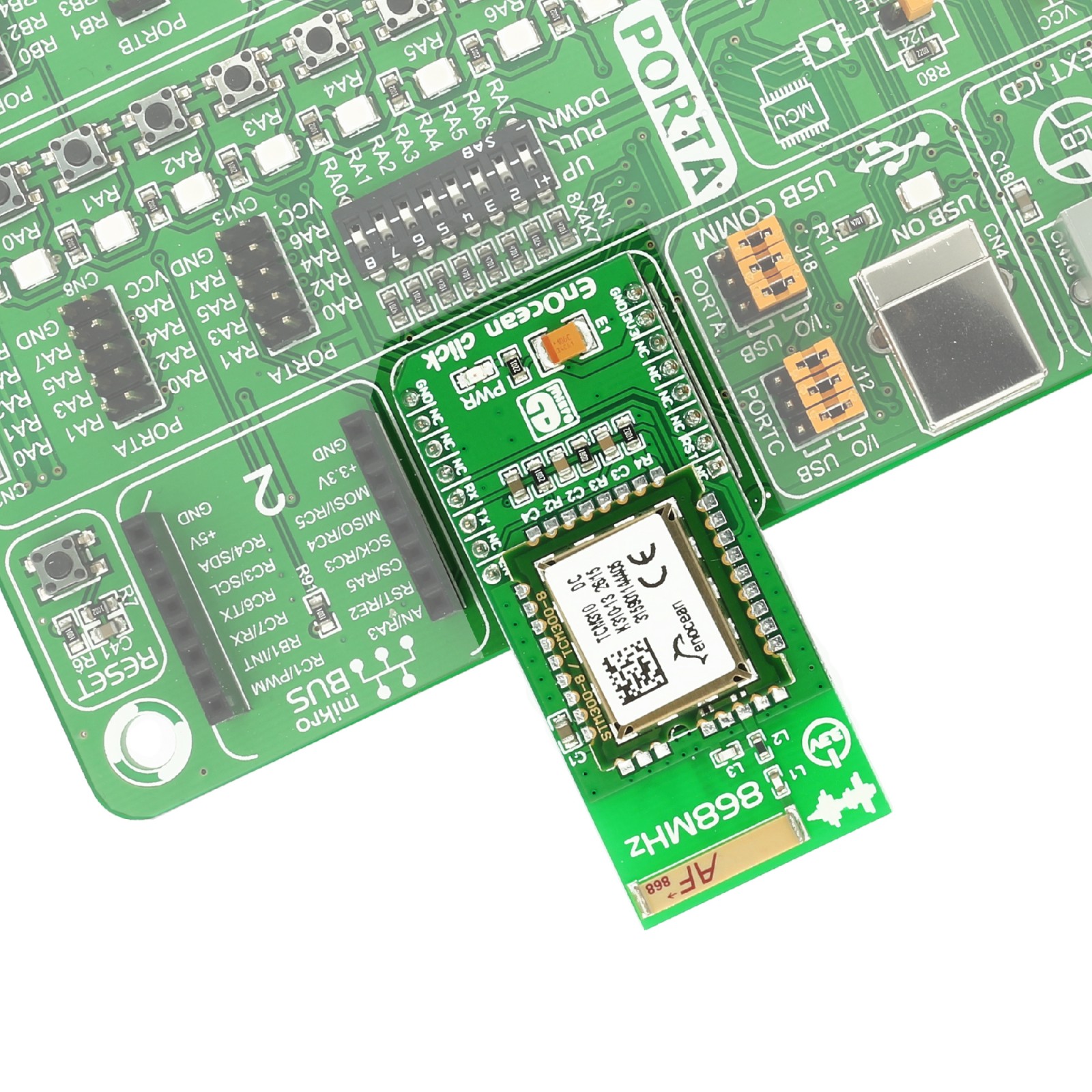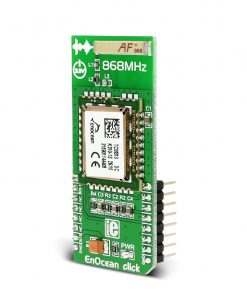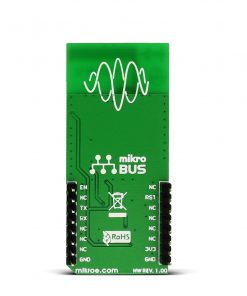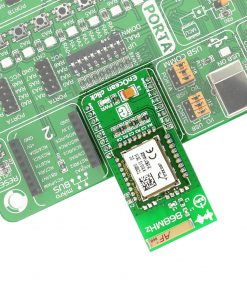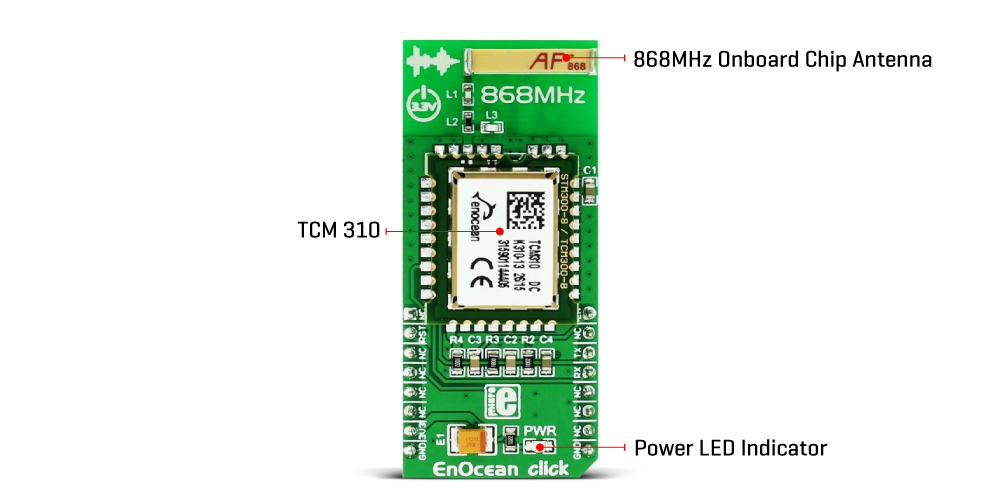EnOcean Click
R865.00 ex. VAT
EnOcean Click is a compact add-on board that adds sub-gigahertz wireless communication to your application. This board features the TCM310, a bidirectional transceiver gateway energy harvesting module from EnOcean. The TCM310 is a power-free device that does not need a battery. It can get energy from various things in the surrounding environment, such as motion, light, or temperature differences, to harness enough power to send a wireless signal. The EnOcean module on this Click board™ operates on the EnOcean Serial Protocol 3 (ESP3), which specifies how the module communicates with the host MCU. This Click board™ makes the perfect solution for use with EnOcean’s energy harvesting modules, including self-powered, battery-free wireless switches, sensors, and actuators.
EnOcean Click is supported by a mikroSDK compliant library, which includes functions that simplify software development. This Click board™ comes as a fully tested product, ready to be used on a system equipped with the mikroBUS™ socket.
Stock: Lead-time applicable.
| 5+ | R821.75 |
| 10+ | R778.50 |
| 15+ | R735.25 |
| 20+ | R707.57 |

